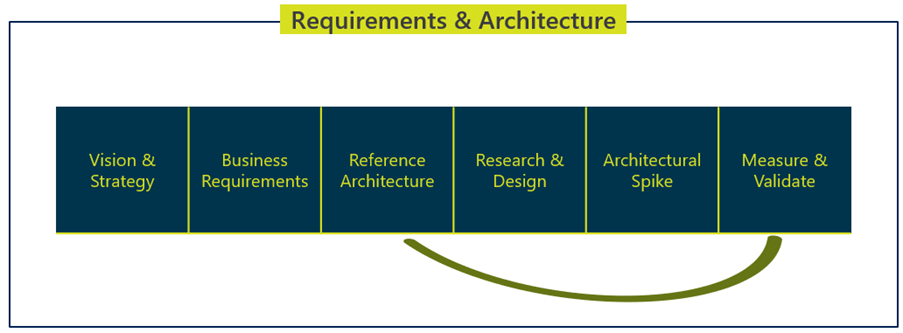Architecture in the Cloud
Solution architecture is concerned with the planning, design, implementation, and ongoing improvement of a technology system.
The architecture of a system must balance and align the business requirements with the technical capabilities that are needed to execute those requirements.
The finished architecture is a balance of risk, cost, and capability throughout the system and its components.
Running a solution in the cloud does not reduce the need for requirements to be clear. In fact, the flexibility and power provided by the cloud mean that it is even more important to have clear requirements from business stakeholders; otherwise, you could end up solving problems that don't exist, missing an important design decision, or going beyond the available budget by adding unnecessary resiliency.

Non-functional requirements (NFRs)
Below is a short list of NFRs (not exhaustive) that may be provided by the business to help inform the design of a solution.
Reliability requirements
- Service level agreement (SLA)
- Uptime objective
- Recovery time objective (RTO)
- Recovery point objective (RPO)
- Recoverability
Security requirements
- Geographical location
- Compliance and legislation
- Identity and access management
- Privacy
- Data Integrity
- Public or private endpoints (or both)
- OWASP
- Hybrid connectivity
- DDOS
Performance requirements
- Peak throughput, e.g., Requests per minute (RPM), active users
- Business plan for growth
- UX metrics (e.g., Page load time)
- Asynchronous vs Synchronous operations
- Workload profile (predictable, unpredictable, peak time of day)
- Scalability
- Data estate size and growth rate
- Time-to-live (TTL) of reports and views (real-time vs eventual consistency)
Operational requirements
- Prod and non-prod environments (Dev/Test, QA, Pre-prod, Prod)
- Release frequency (hours / days / months)
- Time to onboard (new customer)
- Licensing
- Cost (Management)
- Manageability
Cost optimization
- Cost per user
- Target hosting costs as a percentage of revenue
- Pricing model
- Tenancy model
Azure SLAs
- Familiarize yourself with Azure service-level agreements
- An Azure Service-level Agreement (SLA) can also be read as a minimum service-level objective (SLO).
- An SLA is a financial guarantee, not an absolute guarantee
- Read the SLA details carefully, particularly the definition of "downtime" for each service, which gives important hints about failure modes
For example, in the SLA for Azure SQL Database, "downtime" is defined as:
"The total accumulated Deployment Minutes across all Databases in a given Microsoft Azure subscription during which the Database is unavailable. A minute is considered unavailable for a given Database if all continuous attempts by Customer to establish a connection to the Database within the minute fail."
The Azure SQL Database team expect almost all outages to be transient (brief and non-recurring). Therefore, the retry pattern should be used to continuously retry for up to a minute. This is typical in cloud services; retry has been the default behaviour in ADO.NET since .NET Framework 4.6.1.
External Resources
Finally, resources such as the Azure Architecture Center, Cloud Adoption and Well-Architected Framework can help with thinking around the design and building blocks of your architecture
